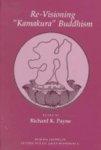
Book Summary
Buddhism during the Kamakura era (1192-1333) has long been compared in the West to Christianity during the European Reformation. This popular view is reinforced by a retrospectivist historiography that regards all prior events as a prelude to the present. From this perspective, because today's predominant forms of Japanese Buddhism (Zen, Pure Land, and Nichiren) were founded during the Kamakura, the only important events of the era are those directly related to the establishment of these three forms of Buddhism. Both the simplistic reading of the Kamakura as a Japanese Reformation and retrospectivist historiography obscure the complexity of the religious situation. While it is true that these new movements were established in the Kamakura era, it is also true that they were marginal to mainstream Buddhism during the period, gaining prominence only in the following Muromachi era (1335-1573). Despite a rhetoric of organic growth, it was hardly a foregone conclusion that these forms would even survive the era -- several similar movements of the time did not. The essays in this collection are an interdisciplinary examination of various aspects of Buddhism during the Kamakura era, including religious practice, literature, and institutional history. They work toward a synchronic historiography and thus provide a broader understanding and appreciation of the complexity and richness of Buddhism during the Kamakura era and of Japanese Buddhism as a whole.
Book Details
| Book Name | Payne: Re-Vision Kamakura Budd Pap |
| Author | Richard K. Payne |
| Publisher | University Of Hawaii Press (May 1998) |
| ISBN | 9780824820787 |
| Pages | 288 |
| Language | English |
| Price | 1325 |








